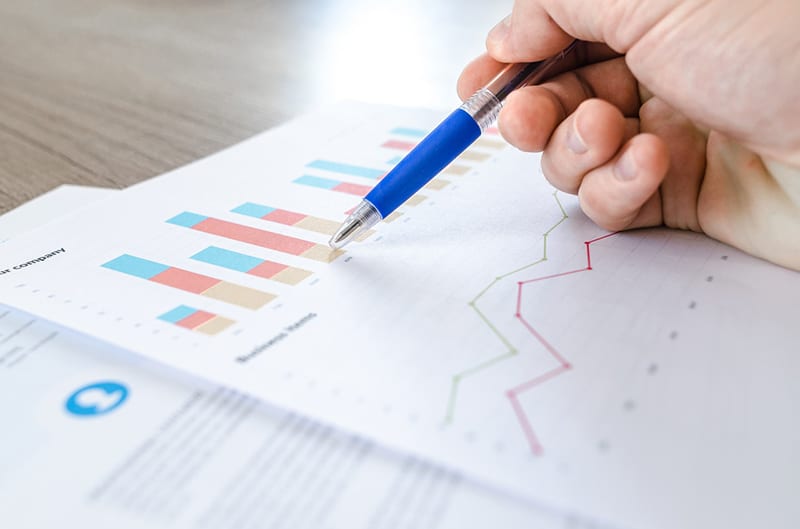Click here to get this post in PDF

Data Analytics tools for STEM teachers & students, put together by University of Maryland’s online Master’s in Business Analytics program
Our world today is becoming increasingly shaped by data, and this is opening new doors for individuals with the skills to harness and analyze this data. Job fields that focus on data and analytics are expected to grow by large percentages over the coming years. For example, the job outlook for operations research analysts, a position that requires robust analytical skills, is expected to grow 27% by 2026, according to the U.S. Bureau of Labor Statistics (BLS). This means there are significant career opportunities for those who possess these types of in-demand advanced mathematical abilities.
The benefits of understanding data and analytics tools are not just limited to a student’s future career, however. Data and analytics can also help students excel in school. They can serve as new hobbies or interests for children with a penchant for mathematics. And they can allow students to learn in new ways, both inside and outside of the classroom.
According to SAS, a leading data organization, “Analysis of data can uncover correlations and patterns. There’s less need to rely on guesses or intuition.” Analytics can help students uncover solutions to problems in courses such as math and science. Analytics can also help students interested in technology or engineering glean new insights into processes and implement improvements.
The benefits of providing K-12 students with analytics tools are vast, but not all science, technology, engineering and mathematics (STEM) teachers have the necessary resources or know the proper methods of ensuring their students receive a good education in analytics. This guide will provide resources on data and analytics for both STEM teachers and their students, helping to ensure that pupils can use these tools to achieve success in their academic and professional careers.
Data Analytics Tools That Can Help STEM Students & Teachers
Data tools and analytics don’t have to be items that students or professionals encounter later in their career. These tools can help STEM teachers and students today.
Data analytics tools for studying and research
Microsoft Excel is one of the most widely used tools in the analysis of big data and is also available on many students’ home and school computers. More than just a spreadsheet tool, Excel allows teachers and students to analyze data they have collected using the software’s internal program functions. For a student who is trying to analyze certain statistics in a math or science class, Excel can be particularly beneficial.
The Science Journal app allows STEM students to collect and store data about their outside world, like how loud a car horn is, or how bright it is outside during certain times of the day. Available on Android devices, the app also allows users to analyze and interpret the data they collect, helping to sharpen their analysis skills.
Data analytics tools for the classroom
Descriptive, diagnostic, predictive and prescriptive analytics are the four main types of analytics and are a fundamental component for teaching students tools and methodologies when interpreting data. They are used to analyze data to determine what is happening, why it is happening, what may happen and potential solutions to address future outcomes. For example, a STEM teacher could organize a lesson plan in which students have to use descriptive and diagnostic analytics to analyze recent weather patterns to determine what type of weather event may be happening. After collecting and analyzing the data, the students could then apply predictive and prescriptive analytics to interpret when that event may occur and how to prepare for it.
Visual formats are one of the most effective uses of analytics, as they enable individuals to present findings in easy-to-understand images, charts, and graphs. Showing STEM students fun ways to build charts can help them in their current studies and throughout their future education and career. Scholastic lists several activities that can enable kids to collect and analyze data and build subsequent charts. For example, one of the activities is surveying other students at school about what their favorite Thanksgiving dish is, analyzing the data and then building a pie chart that reflects those insights.
Google’s Analytics Academy can help older or more advanced students gain professional data analytics tools and skills. The academy starts with a beginner’s course that delves into the basics of digital analytics, reports and campaign tracking. Students who are particularly interested can continue into the more technically advanced portions of the academy.
Data Analytics Resources & Tips
As teachers and students incorporate data into their studies, these resources will aid them on their analytics journey.
Data analytics news and blogs
Dataversity is a website that provides educational services to business and IT professionals. They also offer regularly updated blogs that delve into particular data subjects and news items. While the subject matter discussed in the blogs may be too advanced to teach within the classroom, it is still generally helpful to STEM teachers who want to be in the loop on the latest developments in the analytics field.
Even if instructors don’t live in the Big Apple, they can still take advantage of the NYC Data Science Academy’s blog to find out how to apply data and analytics in the real world. These examples can inspire students to apply analytics to their own lives. Some recent blog posts include an analysis of movie reviews and an examination of men’s sneaker purchasing trends.
The National Oceanic and Atmospheric Administration’s classroom-ready data sources can help teachers who are looking for actual data to use in a classroom setting. These data sets can help children understand key scientific concepts while also teaching them how to apply analytics when searching for insights and solutions.
Google News can provide regular updates about analytics and data tools. Simply bookmarking “data science” or “data analytics” within a search field will allow teachers and students to receive updates about the field.
Data analytics extracurricular groups and societies
LEGO, the toy manufacturer, sponsors multiple STEM competitions for students with an interest in data, analytics and engineering. These programs are available for students ages 6 to 25 and focus on their ability to use their math, science and analytical skills, as well as their creative ingenuity, to build models and robots.
Mu Alpha Theta is a math-focused honor society with chapters at high schools and two-year colleges across the country. While not necessarily dedicated solely to analytics, students with a natural curiosity about math and statistics can benefit from this organization, which offers mathematics-focused contests and leadership and networking opportunities.
STEM teachers can also start their own club dedicated to analytics and data within their school. Activities for these clubs could include problem-solving using analytics methodologies, or teaching students how to use more advanced analytics programs.
Data analytics tools may seem intimidating for even the most curious and dedicated STEM teachers and students. But analytics can be learned by any instructor or pupil with a passion for finding new solutions to problems and a desire to use data to make the world a better place.
Why Is Data Analytics Important?
Organizations and individuals produce valuable data or information daily. The benefits of being able to apply data analytics tools to this output are wide-ranging.
Educational benefits of data analytics
AltSchool, a California-based startup that is using technology to improve education, is using data and analytics to uncover insights about K-12 students and schools, according to an article in Education Week. Some of these insights include when children may be more academically productive, and how to enable teachers and parents to make necessary adjustments to improve a student’s education.
C’est la vis, an interactive learning app, has been used to teach elementary students in Seattle different methods of data analysis and representation. Children are benefitting from being taught different methods of data analysis and representation. According to Quartz, “It’s not clear if the app is actually improving long-term comprehension,” but, “the response from students and teachers was positive. . . . Teachers noted that they were helping each other with the app and verbalizing concepts about the charts.”
Jobs that use data science knowledge
Data scientist or analyst are the most well-known jobs that incorporate data and analytics. “They’re part mathematician, part computer scientist and part trend-spotter. And, because they straddle both the business and IT worlds, they’re highly sought after and well paid,” according to SAS. A data scientist can work for any organization where analysis is needed for large quantities of information, including banks, tech firms and retail organizations. According to PayScale, the median pay for data scientists is $95,791 per year.
Nurse, derivatives analyst, climatologist, geneticist, political scientist, rocket engineer, criminologist, and survey researcher are among other jobs that deal with data in some way and where analytics knowledge may be helpful, writes Meta S. Brown for Forbes. Regardless of industry or scope of the position itself, data analytics tools can be helpful in any job where data or information is produced.
Career benefits of possessing data science knowledge
A 364,000 increase in job openings for data professionals is predicted by 2020, according to a Forbes article focusing on research from IBM. That same Forbes article says the most lucrative data skills will be proficiency in machine learning, MapReduce, Apache Pig, Apache Hive and Apache Hadoop — types of technological tools or platforms that can assist in the collection and analysis of data.
Data science professionals with MapReduce skills are earning $115,907 on average, according to Forbes. Other research from the BLS shows that computer and research scientists earned a median salary of $118,370 in 2018.
Originally published: data analytics tools for STEM teachers and students.
You may also like: Why should you pursue a Masters in International Business (MIB) in Germany?
Image source: Pexels.com
